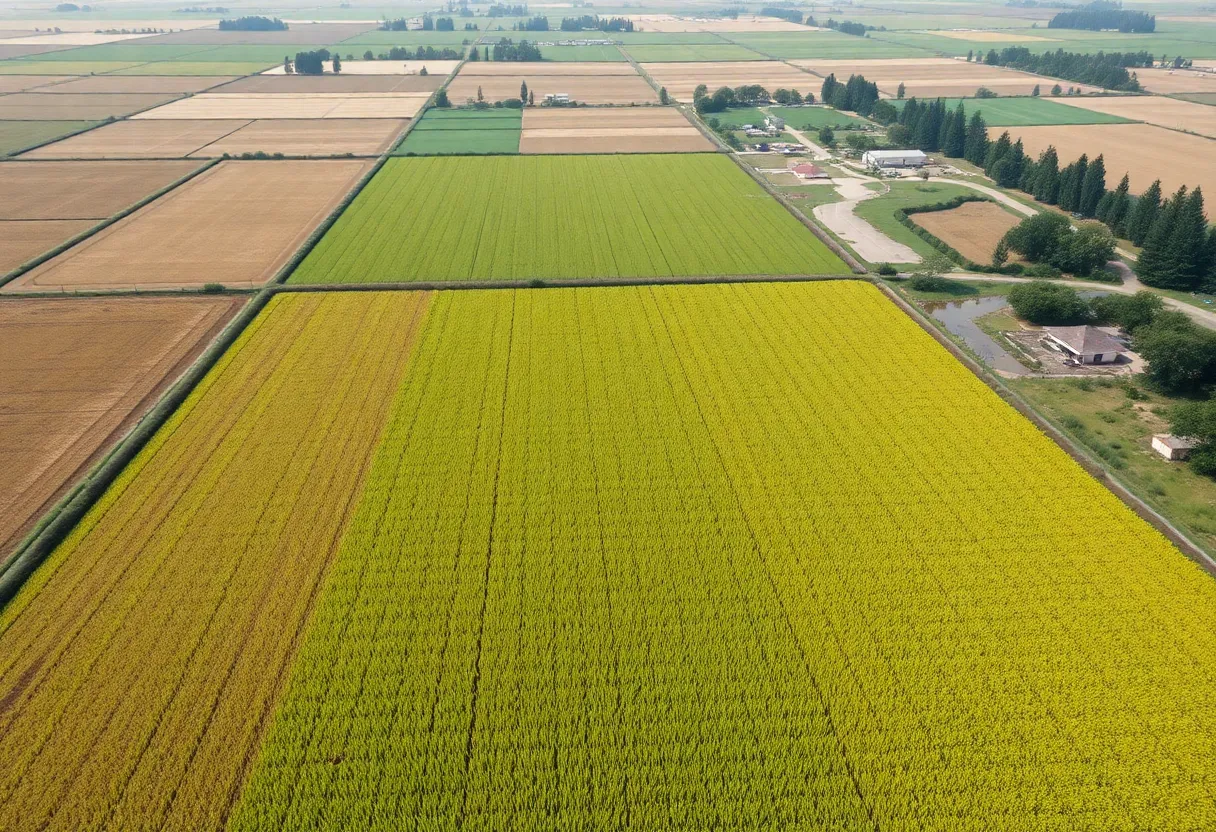California, October 23, 2025
News Summary
California’s rice industry faces severe challenges due to a prolonged drought, with 300,000 acres unharvested this year. Farmers are adapting with innovative practices to manage water shortages and support wildlife. The California Rice Commission plays a crucial role in promoting sustainability and addressing the industry’s economic impacts while advocating for long-term solutions.
California’s Drought and Its Impact on the Rice Industry: Challenges and Innovations
California is facing significant challenges in its rice industry as drought conditions continue for the third consecutive year. This year, approximately 300,000 acres of rice fields are expected to remain unharvested, severely impacting production. In addition, rice farmers such as Kurt Richter in Colusa report planting only 1,300 acres of rice instead of their typical 5,000 due to water shortages. Meanwhile, some farmers in Butte County have fared better, receiving sufficient water to increase their rice planting compared to the previous year.
The rice industry in California generates an estimated $5 billion in revenue and is an integral part of the state’s multi-billion-dollar agricultural sector, which produces around $50 billion annually. The impact of water shortages has raised concerns over long-term sustainability, despite crop insurance providing some financial relief to affected farmers.
The California Rice Commission (CRC) plays an essential role in supporting both rice growers and millers, addressing issues such as pesticide regulation and wildlife habitat preservation. The organization also promotes conservation efforts while managing water shortage impacts on both farmers and wildlife, critical to the state’s unique ecosystem.
Water Management and Environmental Initiatives
Water management is vital for rice farming in California, where timing, efficiency, and sustainability are considered priorities. The Glenn-Colusa Irrigation District focuses on updating infrastructure for effective water allocation and river restoration projects. Rice fields also serve as surrogate wetlands, providing crucial habitats for various wildlife species amid declining natural wetland areas.
Innovative programs like the “Fish Food” initiative aim to support salmon populations by introducing zooplankton from rice fields into local rivers, enhancing food sources for juvenile salmon. Furthermore, many rice farmers have adopted practices that benefit migratory birds, contributing positively to the ecosystem connected to the Pacific Flyway.
Challenges Ahead
As the drought persists, anxiety regarding future water availability for rice farming is mounting among growers. Ongoing collaboration among rice farmers is necessary to address these challenges and promote the industry’s future amid changing environmental conditions. The blend of tradition, innovation, and resilience that characterizes California’s rice producers will be essential in navigating these difficult times.
Everett Willey, a fourth-generation rice farmer and alternate on the California Rice Commission board, represents the dedication and perseverance of the state’s rice-growing community. The Sacramento Valley, recognized as the heart of California’s rice production, showcases the industry’s blend of rich history and forward-thinking strategies, crucial for maintaining its status as one of the most productive rice-producing regions in the nation.
Conclusion
The intersection of drought impacts, economic challenges, and efforts towards sustainable practices will shape the future landscape of California’s rice industry. The resilience of the farmers, paired with advocacy from the CRC, will play a vital role in ensuring the longevity of this critical agricultural sector.
FAQ
What is the estimated revenue generated by California’s rice industry?
How many acres of rice fields are expected to remain unharvested this year?
How are rice fields in California contributing to wildlife conservation?
What infrastructure updates are being emphasized by the Glenn-Colusa Irrigation District?
Chart: Key Features of California’s Rice Industry
| Feature | Details |
|---|---|
| Revenue | $5 billion |
| Acreage Unharvested | 300,000 acres |
| Jobs Provided | Approximately 25,000 |
| Years of Drought | 3 years |
| Conservation Programs | Fish Food Initiative |
Deeper Dive: News & Info About This Topic
- KCRA: Small Bugs in California Rice Fields Impact Salmon
- Wikipedia: Rice
- Davis Enterprise: Rice Fields and Biodiversity
- Google Search: California rice industry
- San Francisco Chronicle: California Rice Farming
- Google Scholar: California rice farming
- Sacramento Bee: Local News on Rice Farming
- Encyclopedia Britannica: Rice Cultivation

Author: STAFF HERE LOS ANGELES WRITER
The LOS ANGELES STAFF WRITER represents the experienced team at HERELosAngeles.com, your go-to source for actionable local news and information in Los Angeles, Los Angeles County, and beyond, specializing in "news you can use" with coverage of product reviews for personal and business needs, local business directories, politics, real estate trends, neighborhood insights, and state news affecting the area—with deep expertise from years of dedicated reporting and strong community input, including local press releases and business updates, while delivering top reporting on high-value events like the Academy Awards, LA Auto Show, and Los Angeles Marathon, extending coverage to key organizations such as the Los Angeles Area Chamber of Commerce and the Los Angeles Tourism & Convention Board, plus leading businesses in entertainment and technology like Warner Bros. and SpaceX, and as part of the broader HERE network including HEREAnaheim.com , HERECostaMesa.com , HEREHuntingtonBeach.com , and HERESantaAna.com , providing comprehensive, credible insights into Southern California's dynamic landscape. HERE Anaheim HERE Beverly Hills HERE Coronado HERE Costa Mesa HERE Hollywood HERE Huntington Beach HERE Long Beach HERE Los Angeles HERE Mission Viejo HERE San Diego HERE Santa Ana





